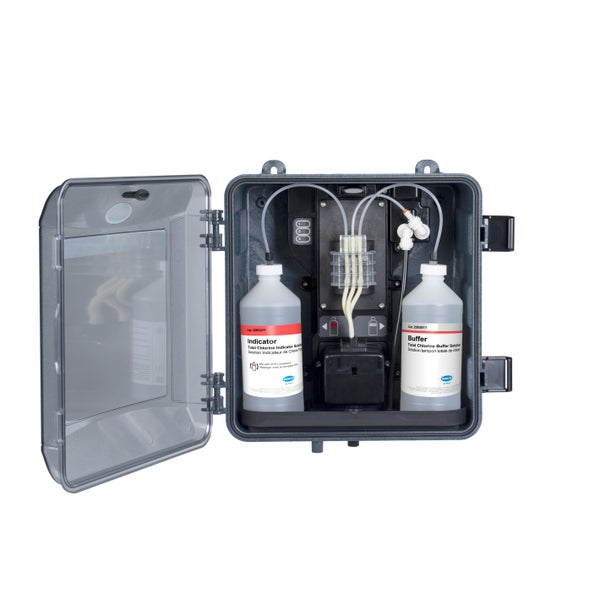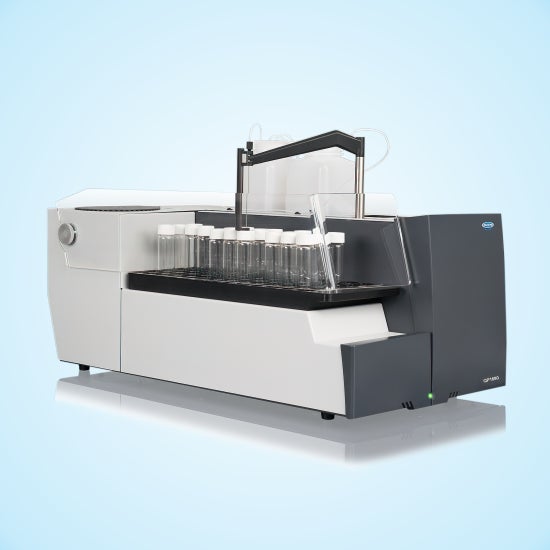Pinpointing Better Dechlorination Control For Steam And Power Generation
Of all the things that need to be done before steam can be produced for power generation or any heavy industrial process using steam — chemical, petrochemical, etc. — preparing clean makeup water is at the top of the list. On one hand, there’s the threat of reverse osmosis (RO) membrane biofouling. On the other, there’s the risk of membrane damage from excessive chlorination. New ultra-low-range (ULR) chlorine analyzers are helping heavy industry strike that fine balance more cost effectively.

Multiple Facets to Overall Goals
With the high cost of maintaining steam generating systems and the high risk of downtime to fix problems caused by improperly treated makeup water, industrial power generation and manufacturing processes take a lot of effort to prevent problems and optimize performance.
While RO membranes are a wonderful development for clean water production, they are not without their challenges for operating at peak efficiency. The issues represent a balance between fouling and cleaning and between shortening or extending service life. Cleaning them frequently to eliminate fouling that clogs their pores and reduces flow rates can eventually damage membranes and shorten their service life. Dosing source water with chlorine reduces the potential for biocontamination but requires a dechlorination process to minimize the potential for chlorine damage to the membrane structures. And while that dechlorination control can be achieved with an additive such as sodium bisulfite (SBS), knowing just how much to add in order to achieve the task most efficiently depends on knowing exactly how much chlorine is present in the water.
Even with proper care, however, RO alone is not good enough to treat feedwater for high-pressure steam in power generation plants. It also requires demineralization to prevent water hardness from coating or plugging steam generating systems. But RO alone can be acceptable for applications such as steamassisted gravity drainage (SAGD) for extracting hydrocarbons in oil-sands production applications. Either way, between membrane biofouling, chlorination steps taken to fight it, and dechlorination processes used to protect chlorine-sensitive membranes, optimal treatment decisions are only as good as the measurements used to make them. Doing a better job of balancing chlorination/ dechlorination based on accurate, direct chlorine readings can help steam-based operations achieve both revenue and profit goals more consistently:
- Quality: Insufficiently treated water will compromise steam system performance, leading to expensive, long-term problems, repairs, or replacements. Accurate chlorine readings in the preparation of steam boiler makeup water go a long way toward influencing cost-efficient generation of pure water.
- Volume: If a power plant or other steam-dependent industrial process cannot satisfy makeup water demand as needed, it is not generating revenue. Such disruptions can involve unscheduled shutdowns or excessive scheduled disruptions for frequent clean- in-place (CIP) procedures or premature RO membrane replacements.
- Cost: Aside from production disruptions, inaccurate chlorine readings can also impinge on optimum profit margins through excessive purchase or labor expenses:
- Chemical Treatment Costs: Whether a process is overdosing on chlorine or dechlorination treatments such as SBS, the costs can add up quickly — up to $3,500/year for overdosing by just 10 gallons per day. To fight that, online ULR chlorine analyzers can now provide direct total-chlorine detection at levels as low as 8 parts per billion (ppb) and measure chlorine with such accuracy and + 3 ppb precision (Figure 1).

-
- Excessive Maintenance, Premature Replacement: Misjudging chlorine levels because of indirect oxidation reduction potential (ORP) readings for ultra-low levels of chlorine can damage RO membranes, leading to time and money being lost to premature membrane replacement. On the other hand, upping the dose of SBS as an added margin of error for dechlorination control can actually encourage anaerobic bacteria growth to foul RO membranes — resulting in excessive CIP maintenance.
Accurate Chlorine Measurement for Real-World Challenges
Because deionized water will try to achieve equilibrium by pulling ions from other materials, having the ability to generate a continuous stream of it on demand is often more desirable than trying to store it for long periods of time. This is where having an online ULR chlorine analyzer is advantageous for automated measurement of chlorine levels in feedwater going to RO membranes and demineralization or deionization treatment, letting users:
- Have confidence in safely using chlorine to control biofouling that clogs membrane pores.
- Detect chlorine as low as 8 ppb using reliable, accurate, proven colorimetric (DPD) chemistry sensitive enough to maximize membrane service life.
- Obtain accurate digital readouts of total chlorine levels — including a cumulative chlorine counter that tracks chlorine exposure in ppm- hours — without the influence of temperature or pH variables that plague ORP readings.
- Capitalize on comprehensive diagnostics and flow sensing alarms to monitor ongoing instrument operation and receive notification of unexpected changes in the flow. Built-in, lowflow detection and flushing features protect against wasting reagents and fouling the colorimeter during periods of insufficient or intermittent flow.
This comparison sheet (Figure 2) shows how significant the difference in the latest generation of online ULR chlorine analyzers can be for a variety of pure water users.
Analyzer Comparison
| CL17 | CL17sc | Ultra Low Range CL17sc | |
|---|---|---|---|
| Accuracy | ± 5% or ± 0.04 mg/L (ppm) as Cl2 (whichever is greater) | ± 5% or ± 0.04 mg/L from 0 to 5 mg/L (whichever is greater) as Cl2 ± 10% from 5 to 10 mg/L as Cl2 | ± 5% or ± 0.01 mg/L mg/L as Cl2 (whichever is greater) from 0–4 mg/L ± 10% from 4–5 mg/L as Cl2 |
| Communication Capabilities | 4–20 mA output | Current output, relays and bus communication via SC controller | Current output, relays and bus communication via SC controller |
| Cycle Time | Fixed 2.5 min | Fixed 2.5 min | Fixed 2.5 min |
| Dimensions (H × W × D) | 45.4 × 31.4 × 17.9 cm (17.9 × 12.4 × 7.0 in) |
32.9 × 34.2 × 17.7 cm (12.9 × 13.5 × 7.0 in) |
32.9 × 34.2 × 17.7 cm (12.9 × 13.5 × 7.0 in) |
| Controller | No | Hach SC controllers | Hach SC controllers |
| Enclosure Rating | IP62 | IP66 | IP66 |
| Flow Meter | No | Yes | Yes |
| Measurement Range | 0–5 mg/L (ppm) | 0–10 mg/L (ppm) | 0–5 mg/L (ppm) |
| Limit of Detection (LOD) | 0.03 mg/L (ppm) | 0.03 mg/L (ppm) | 0.008 mg/L (ppm) |
Reaping the Benefits of Better Dechlorination Control
At one power generating station, a utility tested connecting a ULR chlorine analyzer directly to the RO feed line, recording results every 2.5 minutes. Over several months, the analyzer proved so effective that operators tied it into the distributed control system (DCS) to advise SBS control. The results included:
- 30% reduction in SBS use
- 50% reduction in CIP frequency
- Increased RO membrane life
- Reduced disruptions in power production
Key Outcome: ULR chlorine analyzers provide accurate, ultra-low detection of chlorine (as low as 8 ppb), enabling power and steam facilities to balance biofouling control with membrane protection, reduce chemical costs, and extend RO membrane life.
Additional Resources

Determination of TOC (0-1000 ppm) and TNb (0-100 ppm) in Municipal Wastewater According to EN 1484, USEPA 415.1 and 9060A
go to HACH.COMWater Insights TOC is a valuable sum parameter in municipal wastewater (WW) monitoring. It can be used as a more cost-effective and non-toxic surrogate for COD analysis for process control which also avoids production of toxic waste. TOC is also suitable...

Improving Taste and Odor Issues with TOC Monitoring
go to HACH.COMWater InsightsProblem Customers of the Desoto Parish Water Works drinking water facility complained about taste and odor issues in finished water. Organic matter, like bacteria and algae, can be a key contributor to taste and odor in drinking water....

CL17 for Permanganate Measurement in Drinking Water
go to HACH.COMWater InsightsIntroduction Two of the most abundant metals in the Earth's crust are iron and manganese; these metals are also found in ground and surface waters. The effects of elevated levels of iron and manganese have been discussed in...
Privacy Policy | Cookie Policy | Cookie Settings | Do Not Sell or Share My Data
©Hach All rights reserved.
